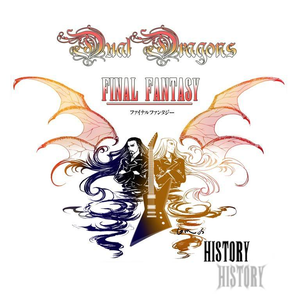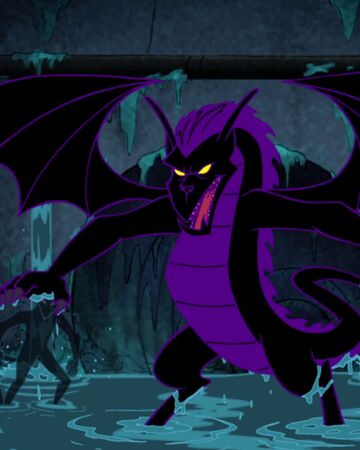Listen to Another Dimension on Spotify. DJ Dragon Boss Song 2018. I TAMED a SECRET NETHER DRAGON in MINECRAFT NETHER DIMENSION w/ BeckBroJack Enjoyed the video? Drop a LIKE and SUBSCRIBE for 🍪's http://bit.ly/SUB2BECK👕. Is a rock band who debuted in chapter three of the Night Begins to Shine four-part special. They are most known for their song, The Night Begins to Shine. 1 Bio 2 Band Members 3 Physical Appearance(s) 4 Episode Appearances 5 Songs Sung by B.E.R. 6 Trivia 7 Gallery 8 Links TBA William J. Reagan Carl Burnett Frank Enea Neil Adams/Ultralak (formerly) Victor Stone/Cyborg William 'Billy.
- Crew Dragon Dimensions
- Yugioh Dimension Dragons
- Game Of War Dragon Dimension
- Four Dimension Dragons
- Different Dimension Dragon
Grendel is a character in the Anglo-Saxon epic poemBeowulf (AD 700–1000). He is one of the poem's three antagonists (along with his mother and the dragon), all aligned in opposition against the protagonist Beowulf. Grendel is feared by all in Heorot but Beowulf. A descendant of Cain, Grendel is described as 'a creature of darkness, exiled from happiness and accursed of God, the destroyer and devourer of our human kind'.[1] He is usually depicted as a monster or a giant, although his status as a monster, giant, or other form of supernatural being is not clearly described in the poem and thus remains the subject of scholarly debate. The character of Grendel and his role in the story of Beowulf have been subject to numerous reinterpretations and re-imaginings.
Story[edit]

Grendel is a character in the poem Beowulf, preserved in the Nowell Codex.[2] Grendel, being cursed as the descendant of the BiblicalCain, is 'harrowed' by the sounds of singing that come every night from the mead-hall of Heorot built by King Hrothgar. He is unable to bear it any more and attacks Heorot. Grendel continues to attack the Hall every night for twelve years, killing its inhabitants and making this magnificent mead-hall unusable. To add to his monstrous description the poet details how Grendel consumes the men he kills; 'now that he could hope to eat his fill.'[1]
Beowulf hears of these attacks and leaves his native land of the Geats to destroy Grendel. He is warmly welcomed by King Hrothgar, who gives a banquet in celebration. Afterwards Beowulf and his warriors bed down in the mead hall to await the inevitable attack of the creature. Grendel stalks outside the building for a time, spying the warriors inside. He then makes a sudden attack, bursting the door with his fists and continuing through the entry. The first warrior Grendel finds is still asleep, so he seizes the man and devours him. Grendel grabs a second warrior, but is shocked when the warrior grabs back with fearsome strength. As Grendel attempts to disengage, the reader discovers that Beowulf is that second warrior. Beowulf uses neither weapon nor armour in this fight. He also places no reliance on his companions and had no need of them. He trusts that God has given him strength to defeat Grendel, whom he believes is God's adversary. [3] Finally Beowulf tears off Grendel's arm, mortally wounding the creature. Grendel flees but dies in his marsh den. There, Beowulf later engages in a fierce battle with Grendel's mother, over whom he triumphs. Following her death, Beowulf finds Grendel's corpse and removes his head, which he keeps as a trophy. Beowulf then returns to the surface and to his men at the 'ninth hour' (l. 1600, 'nōn', about 3 pm).[4] He returns to Heorot, where a grateful Hrothgar showers him with gifts.
Scholarship[edit]
Tolkien[edit]
In 1936, J. R. R. Tolkien's Beowulf: The Monsters and the Critics discussed Grendel and the dragon in Beowulf.[5] Tolkien argues that 'the evil spirits took visible shape' in Grendel and the dragon; however, the author's concern is focused on Beowulf.[6] He points out that while Grendel has Christian origins as the descendant of Cain, he 'cannot be dissociated from the creatures of northern myth.'[7] He also argues for the importance of Grendel's role in the poem as an 'eminently suitable beginning' that sets the stage for Beowulf's fight with the dragon: 'Triumph over the lesser and more nearly human is cancelled by defeat before the older and more elemental.'[8] This essay was the first work of scholarship in which Anglo-Saxon literature was seriously examined for its literary merits – not just scholarship about the origins of the English language, or what historical information could be gleaned from the text, as was popular in the 19th century. Tolkien wrote his own translation of Beowulf, entitled Beowulf: A Translation and Commentary together with Sellic Spell,[9] between 1920 and 1926.
Physical description[edit]
During the decades following Tolkien's essay, the exact description of Grendel was debated by scholars. Indeed, because his exact appearance is never directly described in Old English by the original Beowulf poet, part of the debate revolves around what is known, namely his descent from the biblical Cain (the first murderer in the Bible). Grendel is called a sceadugenga – 'shadow walker', in other words 'night goer' – given that the monster was repeatedly described to be in the shroud of darkness.[10][11]
Crew Dragon Dimensions
A visual interpretation is the depiction of Grendel in Robert Zemeckis's 2007 film Beowulf.

Interpretations[edit]
Some scholars have linked Grendel's descent from Cain to the monsters and giants of the Cain tradition.[12]
Seamus Heaney, in his translation of Beowulf, writes in lines 1351–1355 that Grendel is vaguely human in shape, though much larger:
... the other, warped
in the shape of a man, moves beyond the pale
bigger than any man, an unnatural birth
called Grendel by the country people
in former days.[13]

Heaney's translation of lines 1637–1639 also notes that Grendel's disembodied head is so large that it takes four men to transport it. Furthermore, in lines 983–989, when Grendel's torn arm is inspected, Heaney describes it as being covered in impenetrable scales and horny growths:
Every nail, claw-scale and spur, every spike
and welt on the hand of that heathen brute
was like barbed steel. Everybody said
there was no honed iron hard enough
to pierce him through, no time proofed blade
that could cut his brutal blood caked claw[14]
Alfred Bammesgerber looks closely at line 1266 where Grendel's ancestry is said to be the 'misbegotten spirits'[15] that sprang from Cain after he was cursed. He argues that the words in Old English, geosceaftgasta, should be translated 'the great former creation of spirits'.[16]
Peter Dickinson (1979) argued that seeing as the considered distinction between man and beast at the time the poem was written was simply man's bipedalism, the given description of Grendel being man-like does not necessarily imply that Grendel is meant to be humanoid, going as far as stating that Grendel could easily have been a bipedal dragon.[17]
Other scholars such as Kuhn (1979) have questioned a monstrous description, stating:
Yugioh Dimension Dragons
There are five disputed instances of āglǣca [three of which are in Beowulf, lines] 649, 1269, 1512 ... In the first ... the referent can be either Beowulf or Grendel. If the poet and his audience felt the word to have two meanings – monster and hero – the ambiguity would be troublesome; but if by āglǣca they understood a fighter, the ambiguity would be of little consequence, for battle was destined for both Beowulf and Grendel and both were fierce fighters (216–217).
O'Keefe has suggested that Grendel resembles a berserker, because of numerous associations that seem to point to this possibility.[18]
Sonya R. Jensen argues for an identification between Grendel and Agnar, son of Ingeld, and suggests that the tale of the first two monsters is actually the tale of Ingeld, as mentioned by Alcuin in the 790s. The tale of Agnar tells how he was cut in half by the warrior Bothvarr Bjarki (Warlike little Bear), and how he died 'with his lips separated into a smile'. One major parallel between Agnar and Grendel would thus be that the monster of the poem has a name perhaps composed of a combination of the words gren and daelan. The poet may be stressing to his audience that Grendel 'died laughing', or that he was gren-dael[ed] or 'grin-divid[ed]', after having his arm torn off at the shoulder by Beowulf, whose name means bee-wolf or bear.[19]
Depictions[edit]
Game Of War Dragon Dimension
Grendel appears in many other cultural works.

Notes[edit]
Four Dimension Dragons
- ^ abJones, Gwyn (1972). Kings, Beasts and Heroes. London: Oxford University Press. p. 12. ISBN0-19-215181-9.
- ^Heaney, Seamus (2012). Beowulf (9th ed.). New York: Norton. pp. 41–108. ISBN978-0-393-91249-4.
- ^Nicholson, Lewis E. (1963). An Anthology of Beowulf Criticism. Notre Dame, Indiana: University of Notre Dame Press. p. 236.
- ^George, Jack. Beowulf: A Student Edition. p. 123.
- ^Tolkien, J. R. R. 'Beowulf: The Monsters and the Critics.' In Daniel Donoghue (ed.), Beowulf a Verse Translation. Norton, 2002, pp. 103–130.
- ^Tolkien, 2002, p. 119
- ^Tolkien, 2002, p. 122
- ^Tolkien, 2002, p. 128.
- ^Tolkien, J. R. R.; Tolkien, Christopher (2014). Beowulf: A Translation and Commentary: together with Sellic Spell.
- ^Thorpe, Anglo-Saxon Poems, p. 48
- ^Heyne, Beowulf, p. 129; p. 228, s.v. 'genga'; p. 298, s.v. 'scadu-genga'
- ^Williams, David (1982). Cain and Beowulf: A Study in Secular Allegory. Toronto: University of Toronto Press.
- ^Heaney, Seamus. Beowulf lines 1351–1355.
- ^Heaney, Seamus. Beowulf lines 983–989.
- ^Beowulf. Translated by Seamus Heaney. Norton Anthology of English Literature, 9th ed., vol. A, edited by Stephen Greenblatt, Norton, 2012, pp. 41–108
- ^Bammesberger, Alfred. 'Grendel's Ancestry'. Notes & Queries, vol. 55, is. 3, 1 September 2008, pp. 257–260. doi:10.1093/notesj/gjn112.
- ^Dickinson, Peter. The Flight of Dragons ch. 10 'Beowulf'. New English Library, 1979.
- ^Berserker
- ^Jensen, S R (1998). Beowulf and the Monsters. Sydney: ARRC.

Different Dimension Dragon
References[edit]
| Wikimedia Commons has media related to Grendel. |
- Jack, George. Beowulf : A Student Edition. Oxford University Press: New York, 1997.
- Jensen, S R. Beowulf and the Monsters. ARRC: Sydney, corrected edition, 1998. Extracts available online.
- ----. Beowulf and the Battle-beasts of Yore. ARRC: Sydney, 2004. Available online.
- Klaeber, Frederick, ed. Beowulf and the Fight at Finnsburg. Third ed. Boston: Heath, 1950.
- Kuhn, Sherman M. 'Old English Aglaeca-Middle Irish Olach'. Linguistic Method : Essays in Honor of Herbert Penzl. Eds. Irmengard Rauch and Gerald F. Carr. The Hague, New York: Mouton Publishers, 1979. 213–30.
- Tolkien, J.R.R.Beowulf, the Monsters and the Critics. (Sir Israel Gollancz Memorial Lecture, British Academy, 1936). First ed. London: Humphrey Milford, 1937.
- Cawson, Frank. The Monsters in the Mind: The Face of Evil in Myth, Literature, and Contemporary Life. Sussex, England: Book Guild, 1995: 38–39.
- Gardner, John. Grendel. New York, 1971.
- Thorpe, Benjamin (trans.). The Anglo-Saxon Poems of Beowulf: The Scôp or Gleeman's Tale and the Fight at Finnesburg Oxford University Press. 1885.
- Heyne, Moritz. Harrison, James A. Sharp, Robert. Beowulf: An Anglo-Saxon Poem, and The Fight at Finnsburg: a Fragment Boston, Massachusetts: Ginn & Company, 1895.
